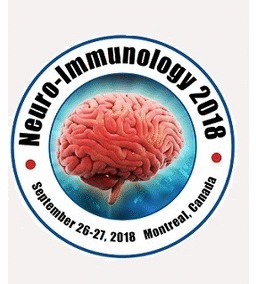International Conference on Neuroimmunology, Neurological disorders and Neurogenetics
Montreal, Canada

Denis Gris
Université de Sherbrooke, Canada
Title: Comprehensive multi-parametric behavioral analysis of neuroinflammation
Biography
Biography: Denis Gris
Abstract
Recently developed various automated video assessment systems that measure mouse behavior produce enormous data sets. The analysis of such multidimensional behavioral data is a difficult task. The questions such as what parameters to use and how to combine similar behavioral parameters into various categories require an application of unbiased statistical approaches. We have developed simple and at the same time powerful protocol of behavioral analysis using R programming. Using this protocol in a mouse model of multiple sclerosis we have characterized a behavioral signature of neuroinflammation. Multiple sclerosis is an autoimmune disease of the central nervous system. Recently, we have discovered an endogenous pathway that limits inflammation in a multiple sclerosis-like disease in mice. One of the key molecules of these pathways is Nlrx1 that belongs to Nlr family of proteins. Nlrs bind multiple proteins inside cells thus redirecting molecular signalling. Using state-of-the-art automated behavioral platform, we demonstrate that Nlrx1 inhibits progression of the diseases in a mouse model of MS. Furthermore we were able to construct mice with an increased predisposition to MS. These mice demonstrate the spontaneous appearance of the disease without any immunization. This model helped us to dissociate the sickness behavioral profile from the behavioral signature of neuroinflammation. We have grouped 33 behavioral activities into clusters and factors that enabled us to reveal signs of neuroinflammation within the first week after the disease induction.
In addition, we noted significant differences in the circadian rhythm of mice with the neuroinflammatory component.
In conclusion, the approach that we used in our study to analyze behavioral signature of neuroinflammation presents highly sensitive, automated, and easy-to-use tool that can be applied to evaluate progression of neurodegenerative diseases and various treatment paradigms.

